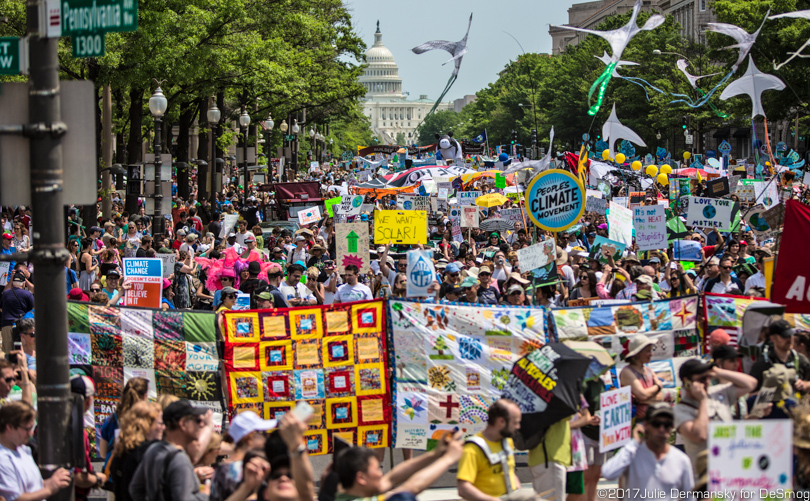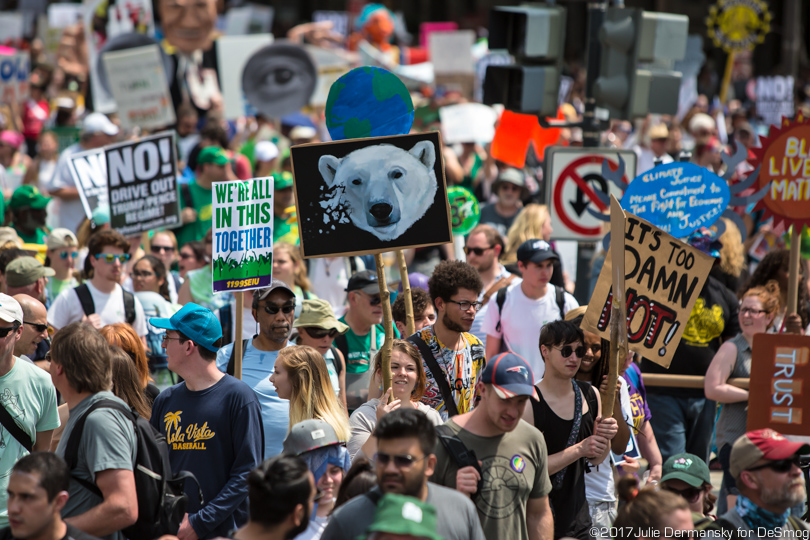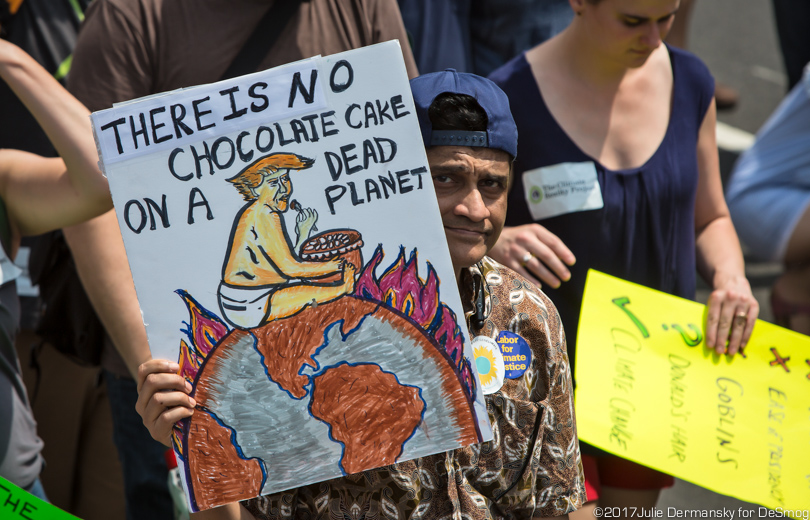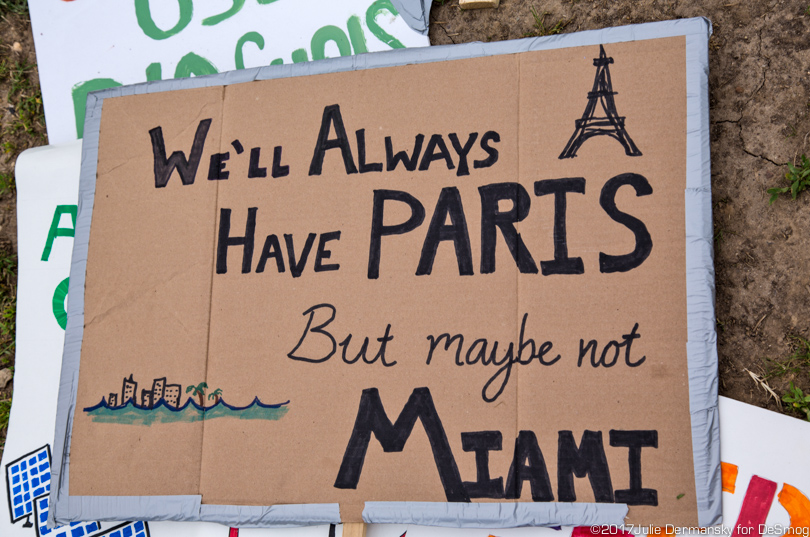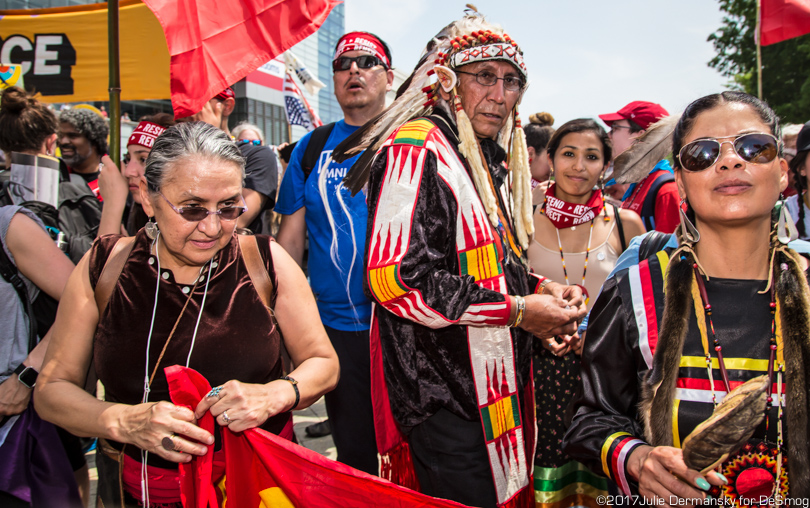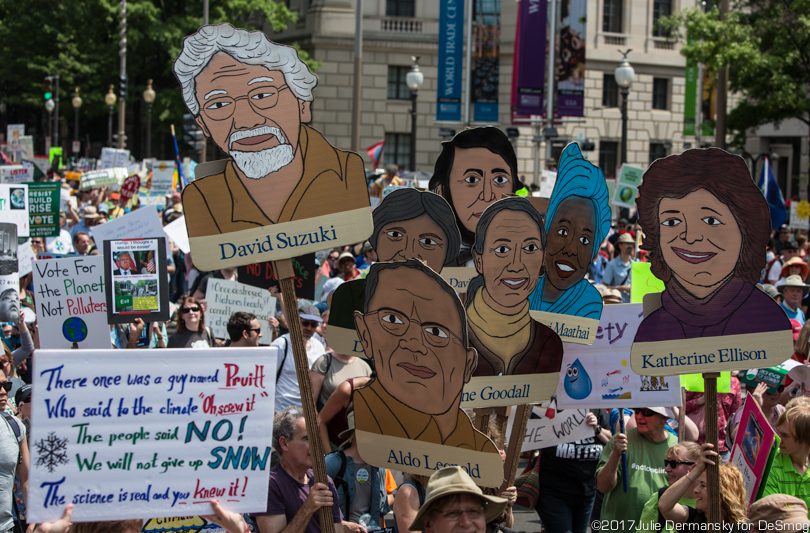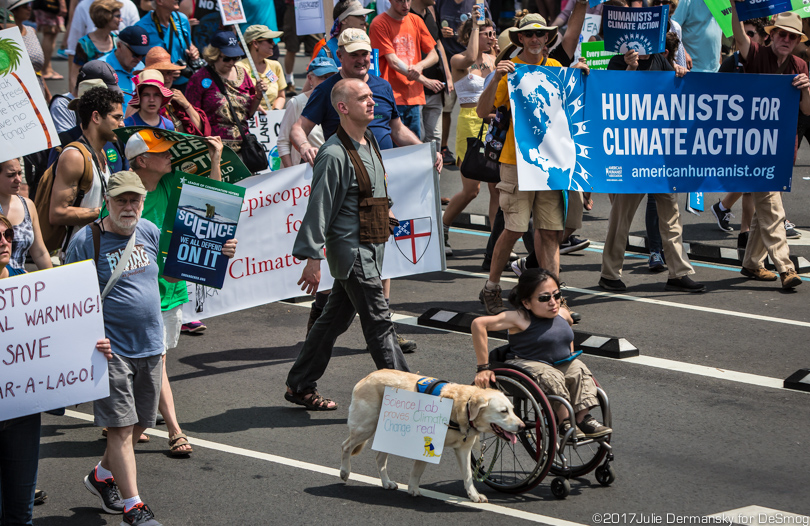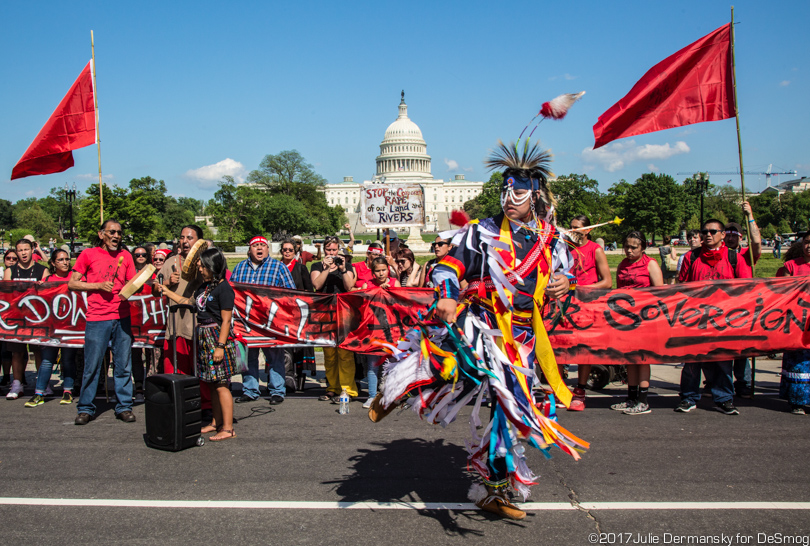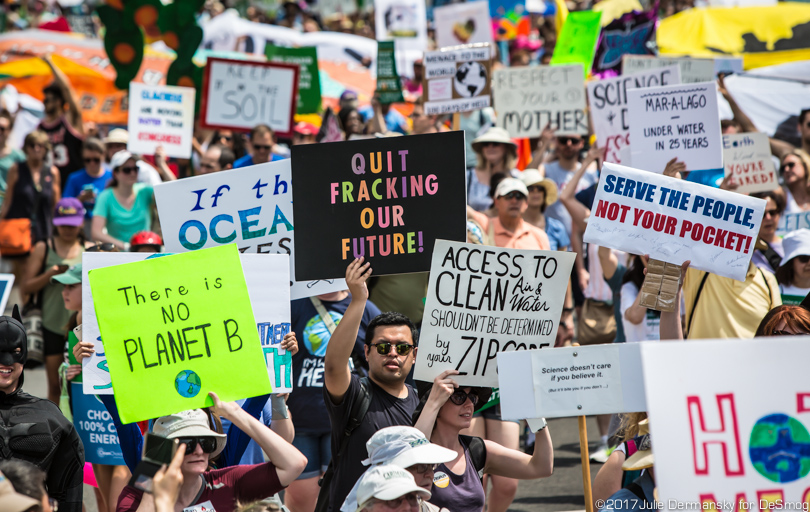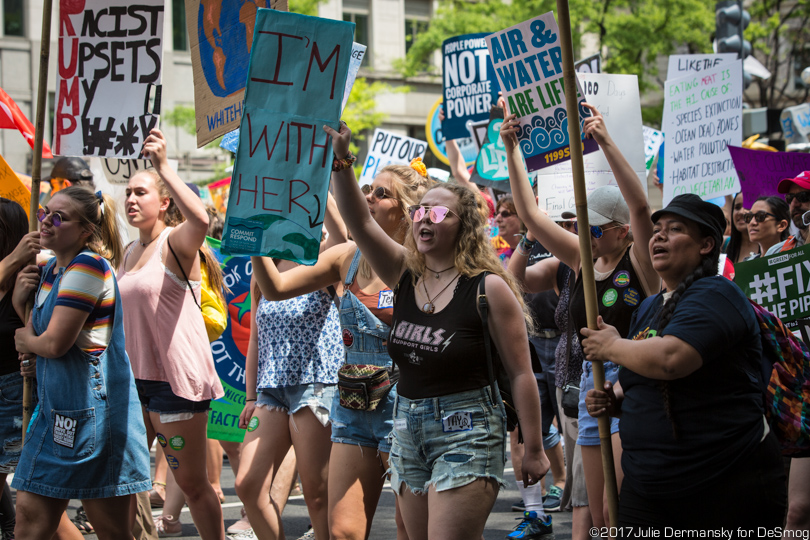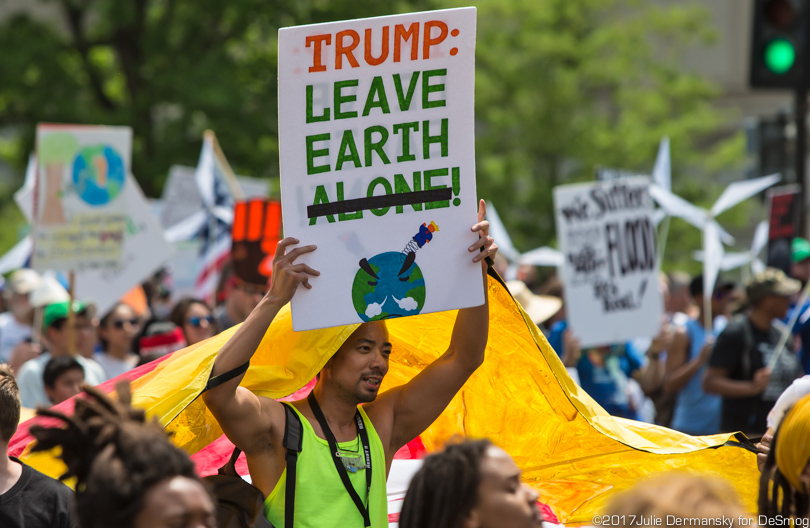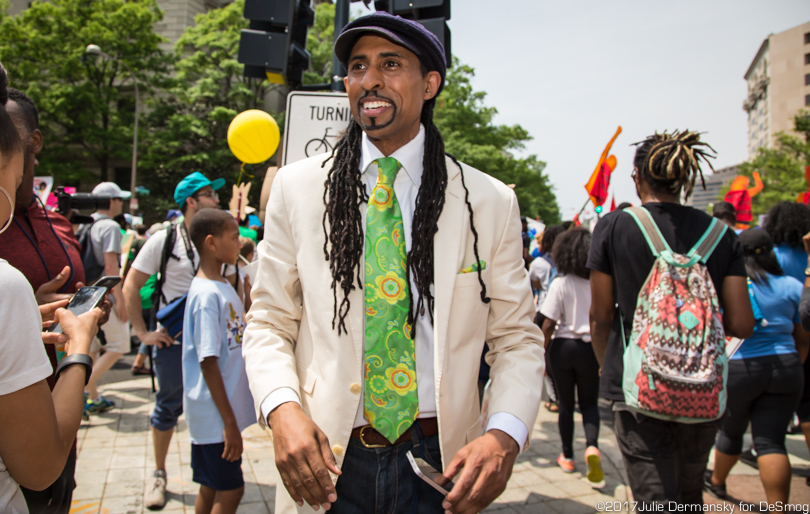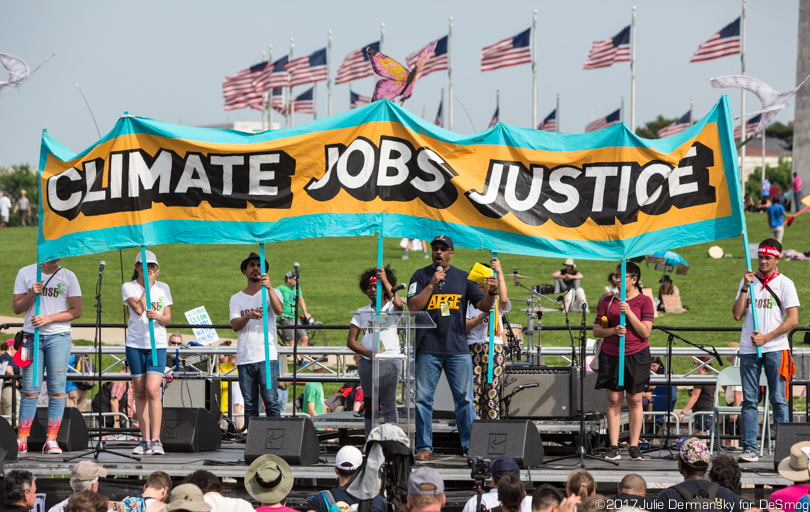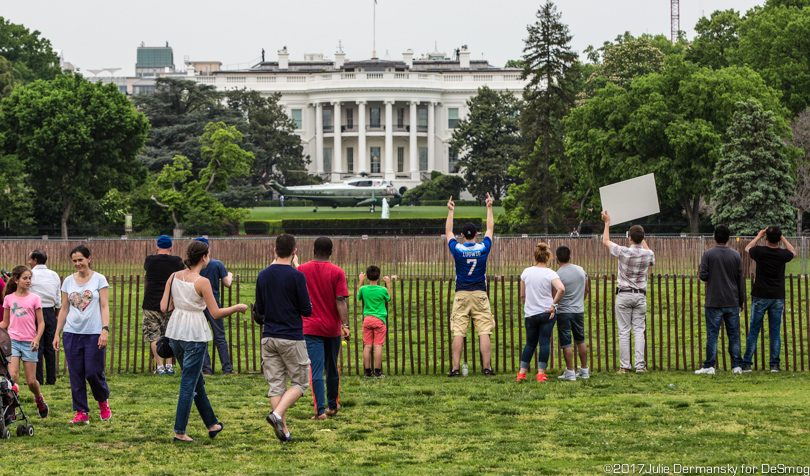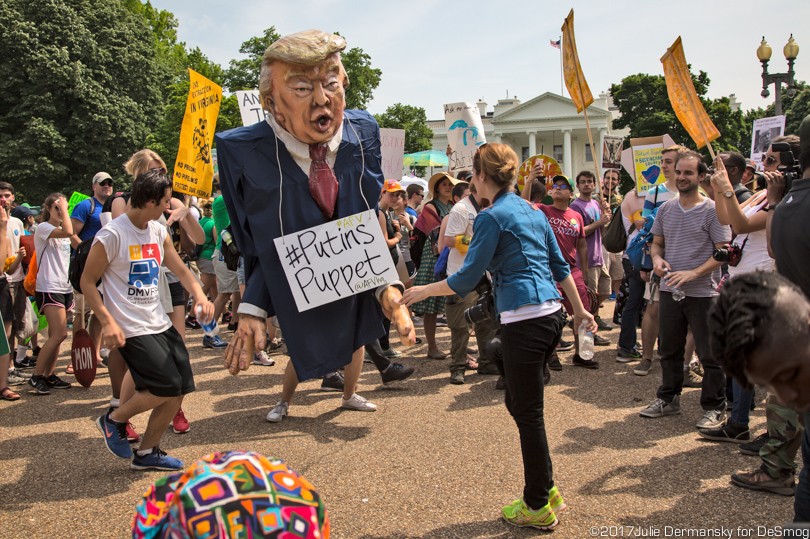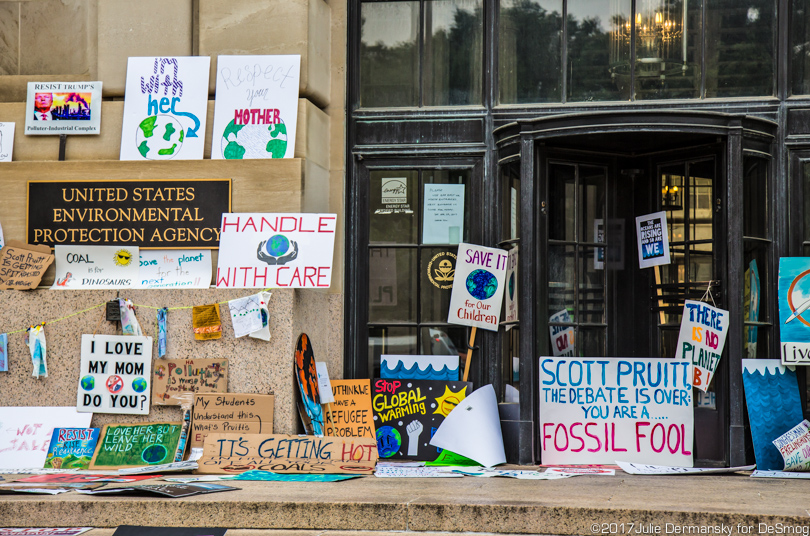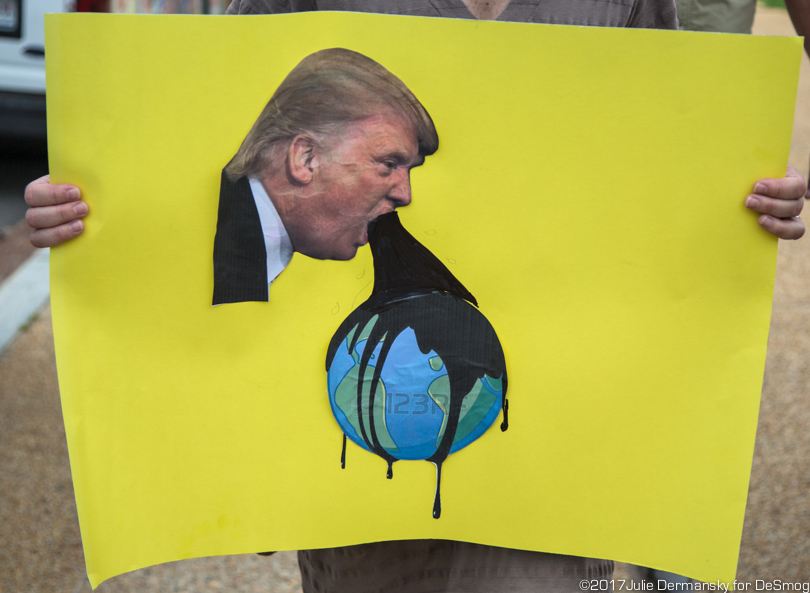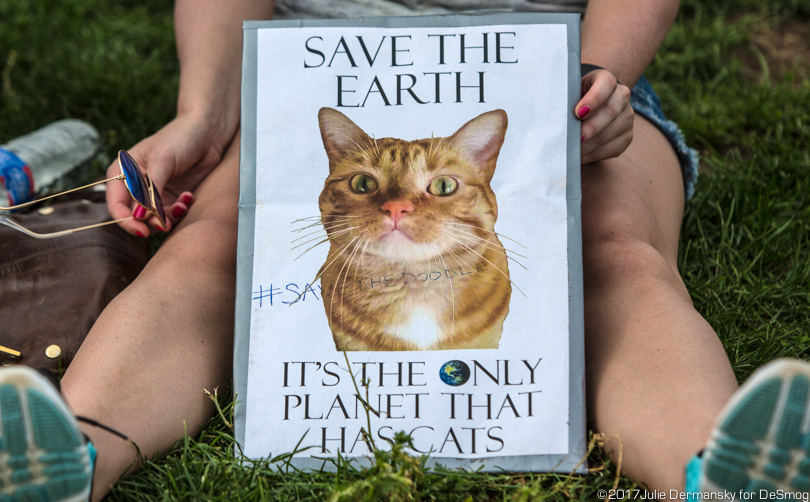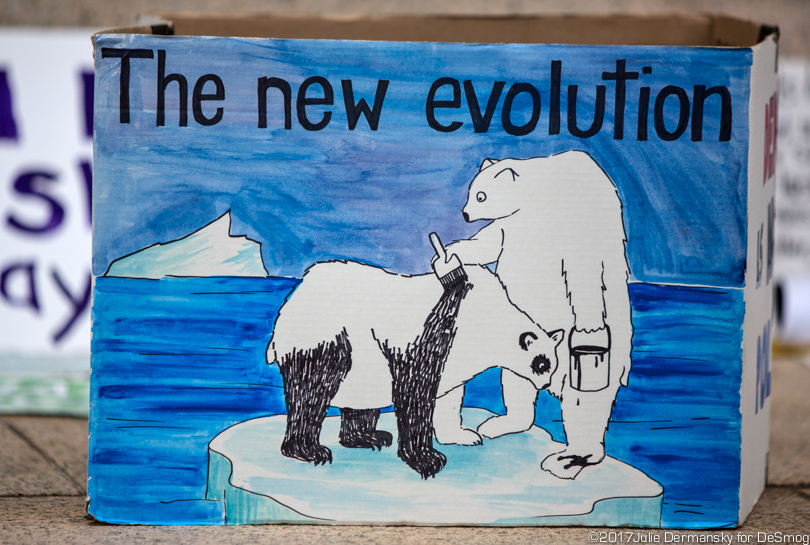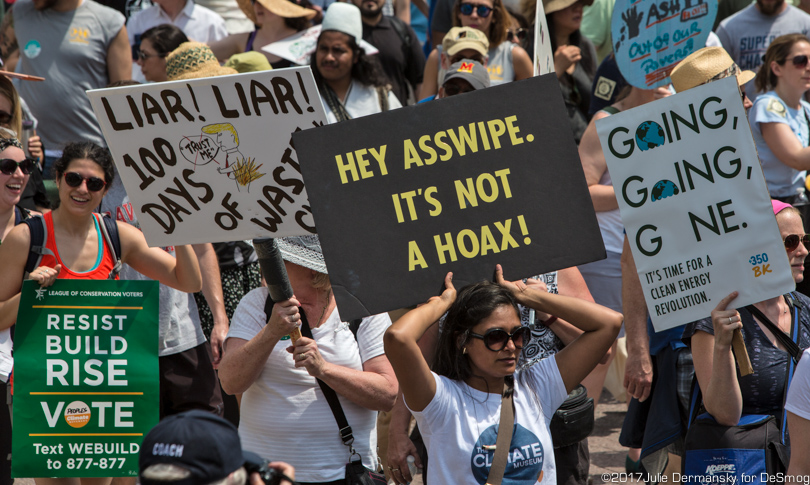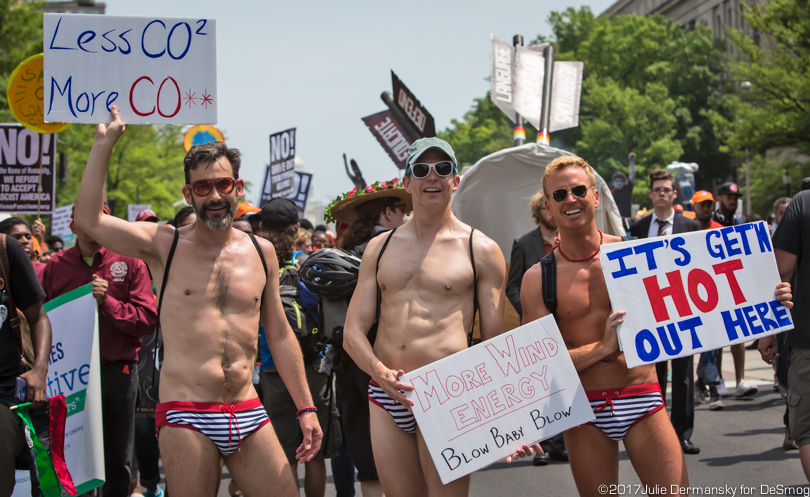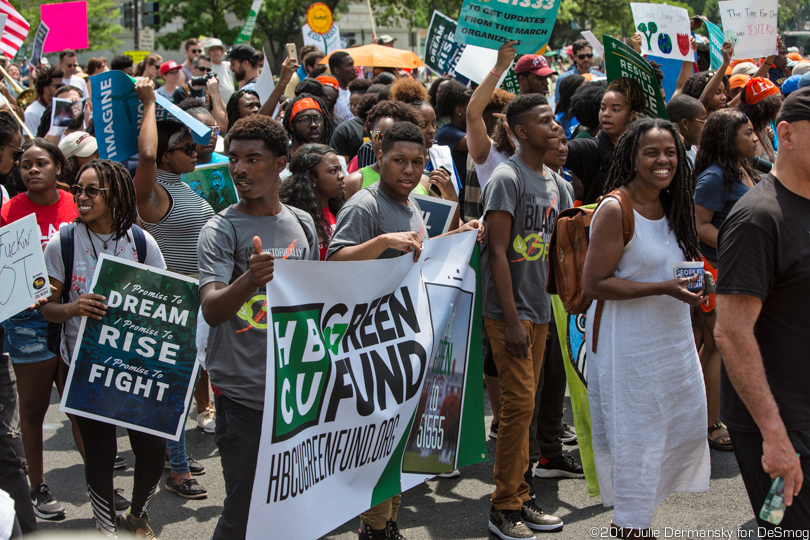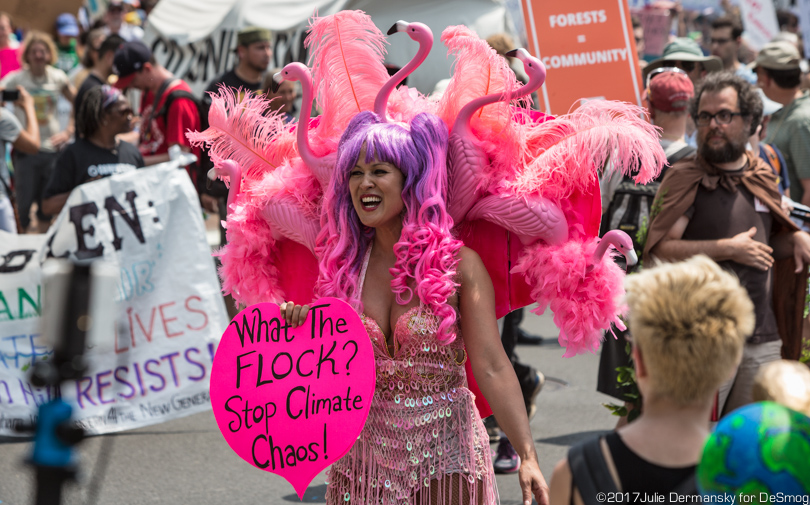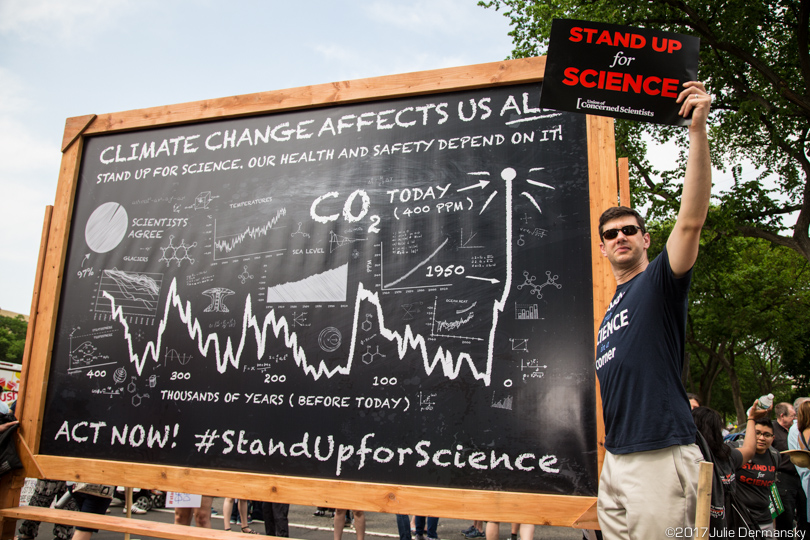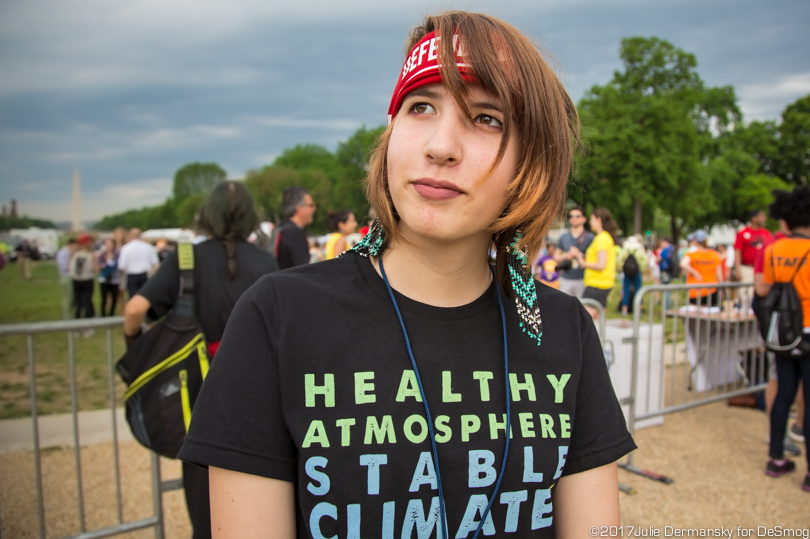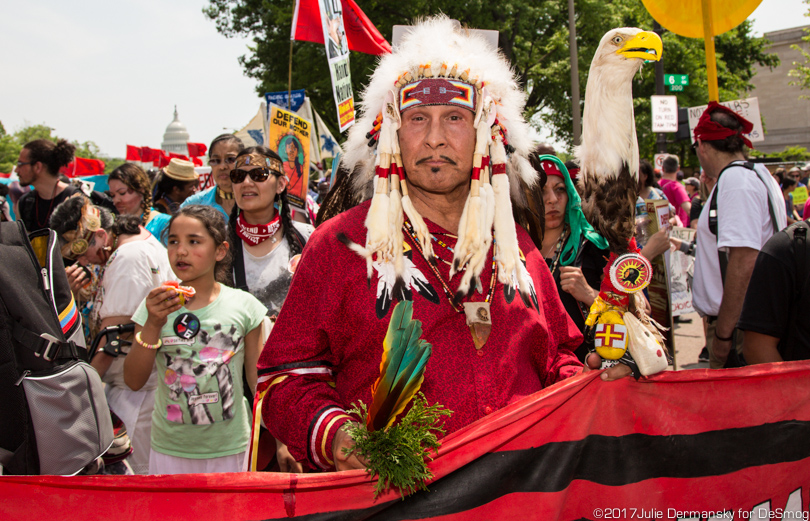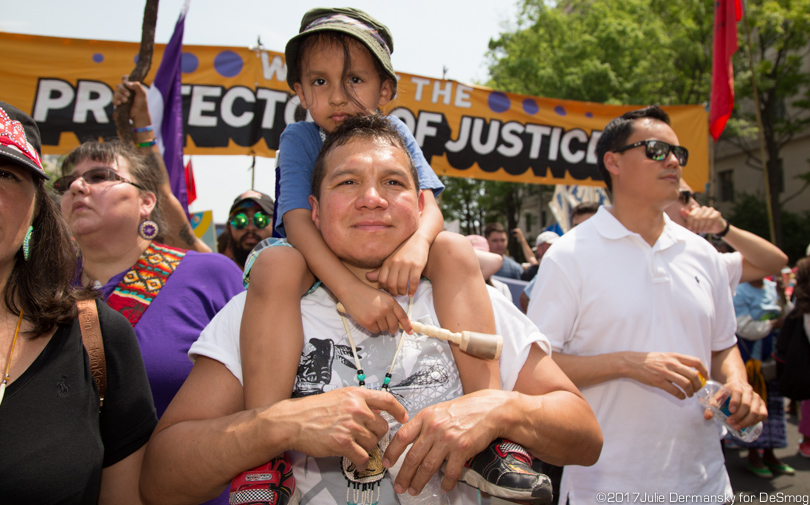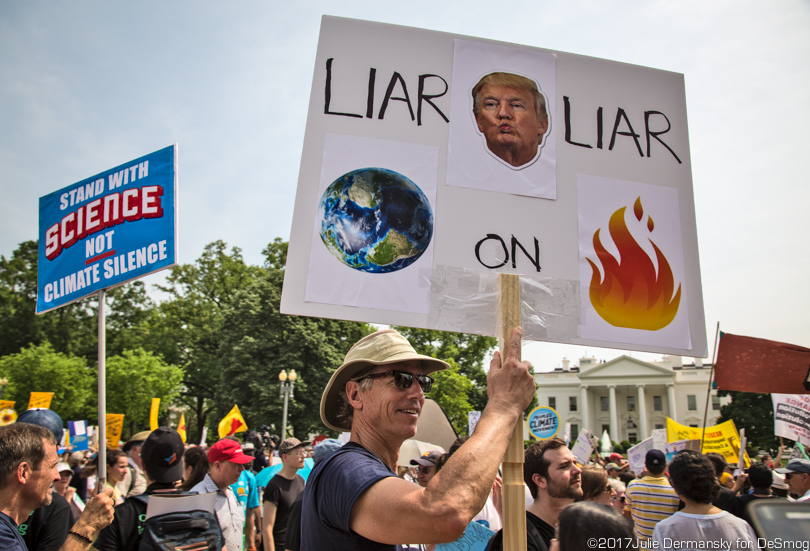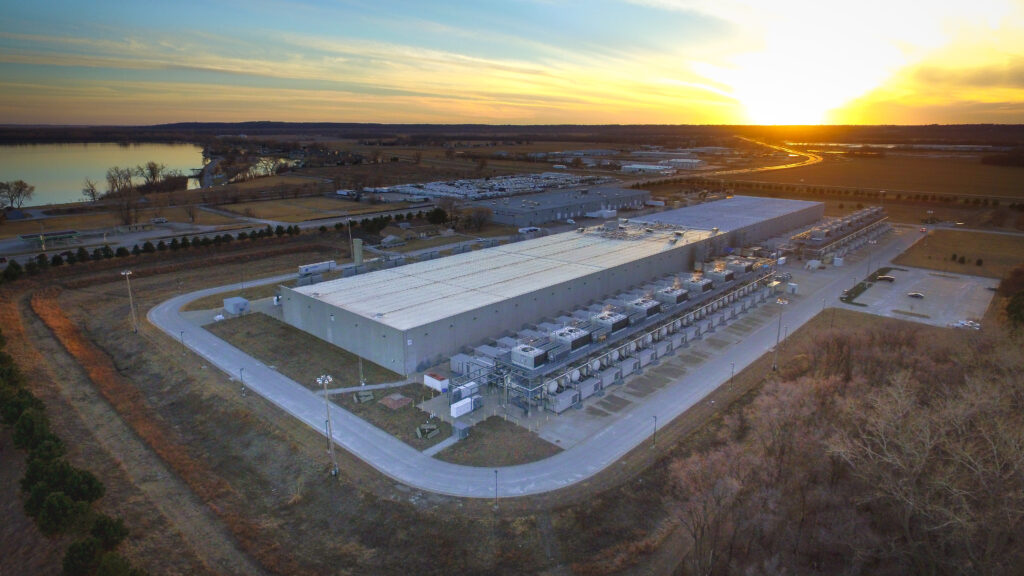On Trump’s 100th day in office, over 200,000 people joined the People’s Climate March in Washington, D.C., as tens of thousands marched in cities around the world. While the mood in D.C. was festive, people shared a sense of urgency, protesting against Trump’s agenda overturning all the environmental progress of the Obama administration.
Climate March in Washington, D.C.
Anti-Trump sign at the Climate March in Washington, D.C.
On the eve of the march, the Environmental Protection Agency (EPA) revised its website to reflect its new direction. “Language associated with the Clean Power Plan, written by the last administration, is out of date. Similarly, content related to climate and regulation is also being reviewed,” J.P. Freire, Associate Administrator for EPA Public Affairs, said.
The page relating to climate change was removed and replaced with a page on Trump’s plans for energy independence. Gone is information about the Obama administration’s regulations for power plants emissions. However, removing the climate information doesn’t remove the facts, and alternative facts aren’t going to cut it with those who turned out for the climate marches, and scores of others who trust climate science.
One of many signs carried in the Climate March that references the Paris Climate Agreement.
Indigenous peoples march for climate action.
David Suzuki and other figures on signs during the Climate March.
Mia Ives-Rublee and her dog Ari, from North Carolina, at the Climate March. She said that she doesn’t think people realize the impacts climate change has on the disability community. Climate change exacerbates health conditions and causes stress.
A coalition of 900 organizations in the People’s Climate Movement, fighting for social and environmental justice joined together for the march in Washington, D.C, highlighting the need to acknowledge intersectionality. The
Merriam Webster dictionary recently added “intersectionality,” which it defines as “the complex, cumulative way in which the effects of multiple forms of discrimination (such as racism, sexism, and classism) combine, overlap, or intersect especially in the experiences of marginalized individuals or groups.”
Mother Earth’s Red Line Action in front of the Capitol on April 28, the day before the Climate March.
Many I spoke to at the march and the Mother Earth’s Red Line Action, an event led by Indigenous Media Rising the day before, spoke about intersectionality, and how recognizing it is critical to making any positive changes.
Climate March making its way down Pennsylvania Avenue in Washington, D.C.
Youth playing prominent role in the Climate March in Washington, D.C.
Message for President Trump at the Climate March in Washington, D.C.
During the march, I spotted Mustafa Ali, a former top EPA official who helped found the agency’s environmental justice program. Ali resigned after the Trump administration took over.
Mustafa Ali at the Climate March in Washington D.C.
Ali was beaming, happy to see the huge, diverse outpouring of people focused on real change for vulnerable communities. He talked about the work that needs to be done to protect the most vulnerable communities and the push over the next 18 months to get people who care about those communities into elected office.
Despite the changes to the EPA’s site, Ali told me, “We are going to have to fight to make sure the access to information continues.”
”We are going to have to work more diligently with our states and we are going to have to rely on our academic institutions and our scientific associations to make sure that information is available to communities.”
Nate James, President of the AFGE Local 3331.
Nate James, President of the American Federation of Government Employees (AFGE) Local 3331, the largest bargaining unit at the U.S. Environmental Protection Agency (EPA), spoke about the pressure EPA workers are now under and how he will continue to fight for their right to do their jobs.
“Reductions of the EPA budget will eviscerate us to the point where all we can do is take the blame for what corporations do to us,” James said. He beseeched the crowd: “Protect your EPA because it is trying to protect you. Fight back, fight back, and fight back.”
Marine One helicopter that took Trump to his rally celebrating his first 100 days in office held in Pennsylvania as the climate rally in front of the Washington Monument went on.
While the rally was winding down, President Trump boarded a helicopter that took off from the White House lawn and flew over the crowd ion his way to a rally of his own in Harrisburg, PA, where he renewed his vow to withdraw from the Paris Agreement and put coal workers at work.
How long can Trump remain tone deaf on arguably the most pressing issue of our time? Some at the rally hope he will be removed from office before we find out. A giant Trump puppet labeled “Putin’s puppet” served as a reminder that questions about Trump’s involvement with Russia to rig the election remain.
Donald Trump puppet dancing in front of the White House during the Climate March.
After the march, signs left behind at the EPA‘s Washington D.C. headquarters.
I stopped in front of the EPA’s headquarters on my way to a metro station. It was covered in signs left behind by the marchers. People filed past me, solemnly propping their signs against the building’s facade. “It feels like being at a funeral,” a woman said to me.
Anti-Trump sign at the Climate March in Washington, D.C.
Woman with a sign featuring her cat Sadie sitting on the National Mall listening to the rally after the Climate March.
Sign left in front of the EPA‘s Washington Office.
Member of the Aztec Dance group performing on the National Mall after the Climate March.
Anti-climate denier sign at the Climate March in Washington, D.C.
Three friends emphasizing rising temperatures at the Climate March in Washington D.C.
Contingent with the HBCU Green Fund at the Climate March.
Marni Halasa, costume maker for activists, in the Climate March.
Message from the Union of Concerned Scientists saying that climate change affects us all on a black board at the Climate March in Washington, D.C.
Jayden Foytlin before the march. She is one of the plaintiffs in a lawsuit filed by Our Children’s Trust, an organization whose goal is securing a legal right to a stable climate.
Mohawk Indian Chief Kindness, from upstate New York, at the Climate March.
Carl and Calvin Jacob, part of the Haudenosaaunee tribe, marching in the Climate March.
One of many Climate March signs featuring President Donald Trump.
Main image: View of Climate March on Pennsylvania Ave. All photos by Julie Dermansky.
Subscribe to our newsletter
Stay up to date with DeSmog news and alerts


